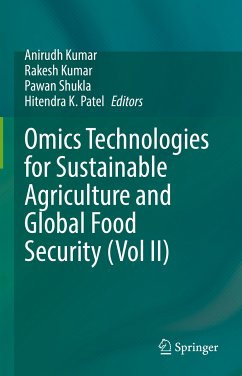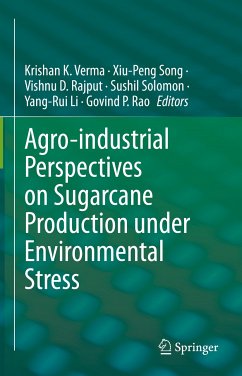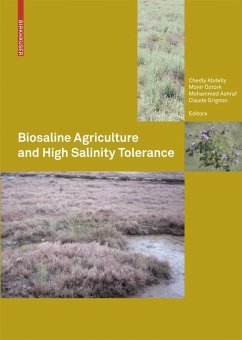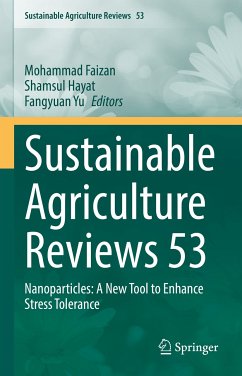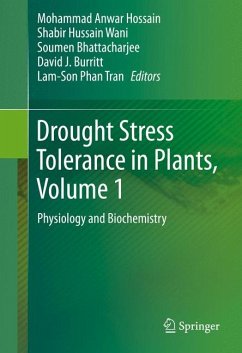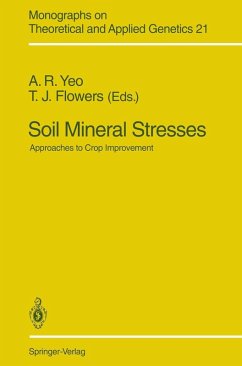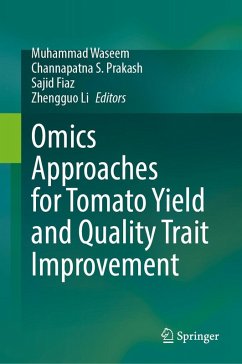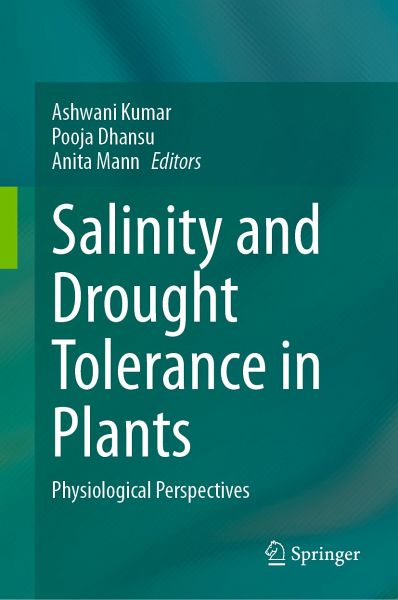
Salinity and Drought Tolerance in Plants (eBook, PDF)
Physiological Perspectives
Redaktion: Kumar, Ashwani; Mann, Anita; Dhansu, Pooja
Versandkostenfrei!
Sofort per Download lieferbar
144,95 €
inkl. MwSt.
Weitere Ausgaben:

PAYBACK Punkte
72 °P sammeln!
This edited book is a comprehensive collection of scientific research on different plants under drought and salt stress conditions. The main focus of this book is to elaborate on the mechanisms being operative in plants under stress and how various biological factors mitigate the adverse effects for better plant productivity. This book covers all physiological, biochemical, and molecular mechanisms operating under drought and saline stresses.The current status and impact of drought and salinity on various crop plants have been elaborated on in different chapters. Agricultural lands are either ...
This edited book is a comprehensive collection of scientific research on different plants under drought and salt stress conditions. The main focus of this book is to elaborate on the mechanisms being operative in plants under stress and how various biological factors mitigate the adverse effects for better plant productivity. This book covers all physiological, biochemical, and molecular mechanisms operating under drought and saline stresses.
The current status and impact of drought and salinity on various crop plants have been elaborated on in different chapters. Agricultural lands are either turning barren or becoming more saline and drought-prone with increasing temperatures, decreasing water tables, untimely rainfall, and other environmental factors. In India, salt-affected soils occupy an area of about 6.73 million ha of which saline and sodic soils constitute roughly 40 and 60%, respectively. All these factors individually or cumulatively, affect the plant growth and development and hence, the crop productivity with the monetary loss. The inbuilt plant's ability with modified/acclimatized mechanisms has been described in various chapters with step-wise descriptions. The role of various plant growth-promoting agents including nano-particles, micro-organisms, metabolites or phytohormones, etc in mitigating adverse effects of drought and salinity has been explained precisely. Updated information on the use of speed breeding, proteomics, epigenetics, and transcriptomics in different crops along with high throughput technologies is included for the cross-talk of various network mechanisms.
This book is helpful for the readers in knowing salinity and drought through the physiological, biochemical and genetic, and molecular levels to understand plant behaviour under stress conditions. Also, the book serves as additional reading material for undergraduate and graduate students of agriculture, plant physiology, biochemistry, forestry, and environmental sciences. National and international agricultural scientists and policymakers will also find this to be a useful read.
The current status and impact of drought and salinity on various crop plants have been elaborated on in different chapters. Agricultural lands are either turning barren or becoming more saline and drought-prone with increasing temperatures, decreasing water tables, untimely rainfall, and other environmental factors. In India, salt-affected soils occupy an area of about 6.73 million ha of which saline and sodic soils constitute roughly 40 and 60%, respectively. All these factors individually or cumulatively, affect the plant growth and development and hence, the crop productivity with the monetary loss. The inbuilt plant's ability with modified/acclimatized mechanisms has been described in various chapters with step-wise descriptions. The role of various plant growth-promoting agents including nano-particles, micro-organisms, metabolites or phytohormones, etc in mitigating adverse effects of drought and salinity has been explained precisely. Updated information on the use of speed breeding, proteomics, epigenetics, and transcriptomics in different crops along with high throughput technologies is included for the cross-talk of various network mechanisms.
This book is helpful for the readers in knowing salinity and drought through the physiological, biochemical and genetic, and molecular levels to understand plant behaviour under stress conditions. Also, the book serves as additional reading material for undergraduate and graduate students of agriculture, plant physiology, biochemistry, forestry, and environmental sciences. National and international agricultural scientists and policymakers will also find this to be a useful read.
Dieser Download kann aus rechtlichen Gründen nur mit Rechnungsadresse in A, B, BG, CY, CZ, D, DK, EW, E, FIN, F, GR, HR, H, IRL, I, LT, L, LR, M, NL, PL, P, R, S, SLO, SK ausgeliefert werden.



